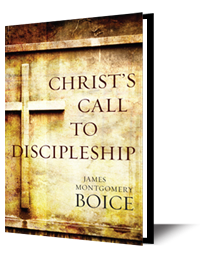To get a proper understanding of what was going on when Jesus overthrew the tables we have to know that the temple was a huge religious complex. The temple itself was relatively small. consisting merely of the Holy Place, where the priests ministered and the Most Holy Place, which only the high priest could enter and that only once a year. But this comparatively small building was surrounded by several concentric courts, the outermost of which was the very large Court of the Gentiles. This is where the money changing and the selling of sacrificial animals took place because, being the place for Gentiles! it was not judged to be a sacred place.
The twenty-first chapter of Matthew marks the beginning of the end of Jesus’ ministry, though we are only two-thirds of the way through the gospel at this point. The reason Matthew 21 marks this beginning is that it records the events leading to Jesus’ final break with Judaism. We looked at one of these events in the last study: Jesus’ entry into Jerusalem on what we call Palm Sunday (Matthew 21:1-11). Jesus intended it as a presentation of himself to Israel as her Messiah and King. It provoked the praise of the people as well as the hostility of the religious leaders. The second event is the one we come to now: the cleansing of the temple (vv.12-17).

Who is Jesus? This is the time to get your answer to that question straight. in case you have never done it before. Matthew has presented Jesus as God's King. We have seen him reflected by many but believed on by a Few. Where do you stand on the issue? Is Jesus the King? is he the Son of God? is he the Savior? Have you trusted him for the salvation of your soul?

Jesus had sent two disciples for the donkeys. When they arrived the disciples spread their clothes on both. Jesus sat on the colt, which was probably led by the mother donkey since it was a young animal that had not been ridden before (Mark 11:2; Luke 19:30). The entire band then made its way down the steep descent of the Mount of Olives in full sight of the city of Jerusalem, attracting people as they went. As the crowd came near, others who were in city and saw What was happening left to join the group that was arriving (John 12:13). Soon the people began to cry out, “Hosanna to the Son of David!" "Blessed is he who comes in the name of the Lord!" "Hosanna in the highest!"

What a king! Not a warlike monarch, arriving on a battle steed to marshal his armies for action. Rather, Jesus comes “humble, and mounted on a donkey,” as Zechariah says (v. 5). In these far-off days a donkey was not an ignoble animal. Kings did ride them. When David appointed Solomon to be his successor as king of Israel he had him seated on his personal mule and taken to Gihon to be anointed by Zadok the priest and Nathan the prophet (1 Kings 1:32-40). But the donkey did symbolize that Jesus was coming in peace, not for war, and that his was to be a gentle, peaceful reign. This is what Jesus was indicating by his action and what Matthew emphasizes by retaining the word “gentle” in the quote. John omits the line containing “gentle” in his quotation, because he is interested only in the fact that Jesus’ riding on a colt fulfilled the words of Zechariah.


















